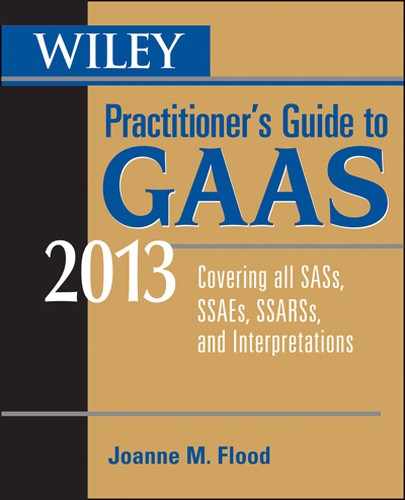PCAOB 11: Consideration of Materiality in Planning and Performing an Audit1
EFFECTIVE DATE AND APPLICABILITY
| Effective Date | This standard currently is effective. |
| Applicability | All audit planning. |
OBJECTIVES OF PCAOB STANDARD 11
Public Company Accounting Oversight Board (PCAOB) Auditing Standard 11 sets the objective of applying the concept of materiality appropriately in planning and performing audit procedures.
FUNDAMENTAL REQUIREMENTS
Materiality in the Context of an Audit
The auditor should plan and perform audit procedures to detect misstatements that, individually or in combination with other misstatements, would result in material misstatement of the financial statements. This includes being alert while planning and performing audit procedures for misstatements that could be material due to quantitative or qualitative factors. It is ordinarily not practical to design audit procedures to detect misstatements that are material, based solely on qualitative factors.
For integrated audits, Auditing Standard 5, An Audit of Internal Control over Financial Reporting that is Integrated with an Audit of Financial Statements, states that the auditor should use the same materiality considerations in planning the audit of internal control over financial reporting that would be used in planning the audit of a company’s annual financial statements.
Establishing a Materiality Level for the Financial Statements as a Whole
The auditor needs to establish a materiality level for the financial statements being audited that is appropriate for the circumstances. The auditor should consider the company’s earnings and other relevant factors. The materiality level should be expressed as a specific amount.
Establishing Materiality Levels for Particular Accounts or Disclosures
The auditor should evaluate whether there are certain accounts or disclosures for which there is a substantial likelihood that misstatements of lesser amounts than the materiality level established for the financial statements as a whole would influence the judgment of a reasonable investor. If this is the case, the auditor should establish separate materiality levels for those accounts or disclosures.
Determining Tolerable Misstatement
The auditor should determine the amount of tolerable misstatement in order to assess the risk of material misstatement, and for planning and performing audit procedures at the account or disclosure level. A tolerable misstatement should be at an amount that reduces to a low level the probability that the total of uncorrected and undetected misstatements would result in material misstatement of the financial statements. Thus, tolerable misstatement should be less than the materiality level for the financial statements as a whole and, if applicable, the materiality level for certain accounts or disclosures.
When determining the tolerable misstatement amount, the auditor should account for the nature, cause, and amount of misstatements accumulated in prior period audits of the financial statements.
Considerations for Multilocation Engagements
If an auditor is auditing the consolidated financial statements of a company with multiple locations or business units, he or she should determine the tolerable misstatement for individual locations or business units at a level that reduces to an appropriately low level the probability that the total of uncorrected and undetected misstatements would result in material misstatement of the consolidated financial statements. Thus, tolerable misstatement at an individual location should be less than the materiality level for the financial statements as a whole.
Considerations as the Audit Progresses
If there are changes in the circumstances, or if additional information comes to the auditor’s attention that causes a substantial likelihood that misstatements of amounts could differ significantly from the materiality level that was established initially, the auditor should reevaluate the established materiality level and tolerable misstatement. Examples of such situations include:
- The materiality level and tolerable misstatement were established initially based on estimated or preliminary financial statement amounts that differ significantly from actual amounts.
- The events or changes occurring after the establishment of the materiality level and tolerable misstatement are likely to affect investors’ perceptions about the company’s financial position, results of operations, or cash flows.
If the auditor’s reevaluation results in a lower amount for the materiality level and tolerable misstatement than initially established, the auditor should reevaluate the effect of the lower amount on the risk assessment and audit procedures, and modify the nature, timing, and extent of audit procedures as required to obtain sufficient appropriate audit evidence.
1 Practitioners should reference the additional guidance listed in the section “Other PCAOB Guidance” in this volume’s chapter PCAOB 1.
